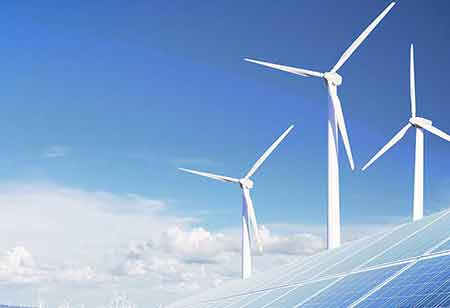Thank you for Subscribing to Energy Business Review Weekly Brief
Attaining Clean Energy Goals with the Rapid Growth of Renewable Energy

By
Energy Business Review | Friday, June 24, 2022
Stay ahead of the industry with exclusive feature stories on the top companies, expert insights and the latest news delivered straight to your inbox. Subscribe today.
The expected growth of renewable energy production worldwide.
FREMONT, CA : Over the next few years, the capacity of generating electricity from renewable energy sources such as solar panels, and wind turbines is going to expand rapidly. The incorporation of new renewable power sources is expected to surpass the previous record even with the inflation in the key materials. By 2026 there is an expected rise of the amount of clean energy produced by 50% more than in the last five years. With this, the capacity will increase to an equivalent amount of the current total of nuclear and fossil fuels combined by 2026. The demand for biofuels has also increased, forecasted to surpass the levels recorded in 2019, even though the rising prices to produce them. The COP26 Climate Change Conference is the reason behind this surge in renewable energy production, with strong support from the government.
The elevated costs of fossil fuels have opened more competitive opportunities for renewable energy fields. This surge is forecasted through all regions of the world. As per the volume of capacity addition, China remains the global leader expected to reach 1200 GW by 2026, around four years earlier than the target they have set. Double the installations compared to 2015-20 are expected to come from India, bringing them up to the top in terms of rate of growth. Europe and the United States are also speeding up significantly to increase their deployments. With these four markets together, an expansion of 80 per cent is forecasted worldwide. In the case of biofuels, Asia is accounted to produce 30 per cent of the demand and India is expected to become the third-largest producer of ethanol.
The further acceleration of the rate of growth for renewable energy can be achieved by addressing the various barriers in the market such as inconsistent policy approaches, challenges in permitting and grid integration, insufficient remuneration, and social acceptance issues. Another major obstacle is the high financing costs. If these hurdles are addressed, the average addition capacity annually will go higher than one-quarter of the forecasted value.
Even with this fast deployment, the goal of attaining net-zero emission will fall short of being met by mid-century. For this to be attained, the addition of renewable power capacity should double the rate in the upcoming years. This would account for the rise of biofuel demands by four times the current requirement and three times higher for renewable heat.
Check Out This : EnerConnex






